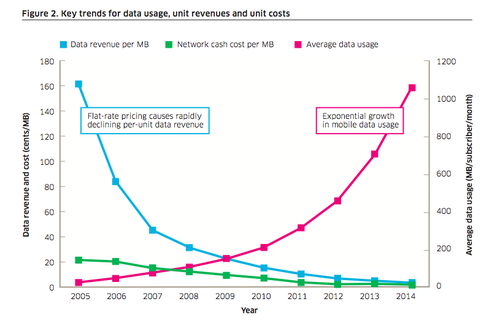Since “everyone” expects a wave of consolidation across the U.S. communications and media space over the next year or so, wouldn’t it be surprising if the “expected” deals being pushed by dealmakers wind up not happening, either because acquirers do not move, or deals are blocked.
Among the “expected moves” that will likely be blocked is a merger between Sprint and T-Mobile US, despite happy talk about a “different” regulatory environment. It is going to be hard for Department of Justice attorneys to okay a deal that will reduce competition in the U.S. market, no matter how much we will hear about the pro-competitive aspects of such a merger.
The best possible argument, despite the greater market concentration, will be that a merged Spring plus T-Mobile US will have the scale to compete better with AT&T and Verizon. The obstacles are that equity analysts and service provider executives want such a merger precisely because it reduces competition in the market.
DoJ is almost certain to continue to apply a market concentration rule that suggests the market already is highly concentrated.
That is not to argue that Sprint and T-Mobile US are not “in play.” It is to argue that other mergers with less exposure to market concentration tests are conceivable, even likely, if not in the next 12 months, then at some point over the next several years.
For about the next year, it appears two of the would-be buyers are signaling they have no intention of doing so.
Comcast Corp. and Charter Communications, the two largest U.S. cable operators, and the largest and second-largest U.S. internet service providers, have agreed to explore ways to work together in the mobile business nationwide.
The two cable companies also agreed that if they want to strike a deal with a mobile provider other than Verizon or buy a mobile company within the next year, they have to do it together.
The deal essentially means neither company can make a move (acquisition, merger, joint venture) in the mobile space involving more than about $200 million, without the other firm’s consent.
That sort of takes Comcast and Charter out of the “logical buyer” category for the immediate future. The deal does not mean either one of those firms will be out of the market for acquisitions later on. But it does not appear either will be considering any such move for a year.
Perhaps another cable company might consider a move, but not Comcast or Charter.
That also means more uncertainty for some other players such as Dish Network. Neither Charter nor Comcast are normally among the names of firms that are “logical buyers” of Dish assets. Verizon normally is mentioned as a spectrum acquirer, though. But recent bidding on 28-GHz spectrum by Verizon suggests Verizon sees other ways to get more spectrum.
Perhaps ironically, for the moment, we are left with one proposed merger that will be controversial and many would-be buyers on the sidelines.
T-Mobile US has tried to merge twice, and been rejected twice (first AT&T, and then Sprint). Comcast, Charter, AT&T and Verizon will not try.
That leaves a number of well-heeled, cash rich app or content providers that theoretically could weigh a bid for Sprint, T-Mobile US or Dish, but who have many other priorities.
The point is that the expected spate of horizontal mergers might well not happen, leaving the field for vertical mergers of the sort Comcast has done, and AT&T now is pursuing.



